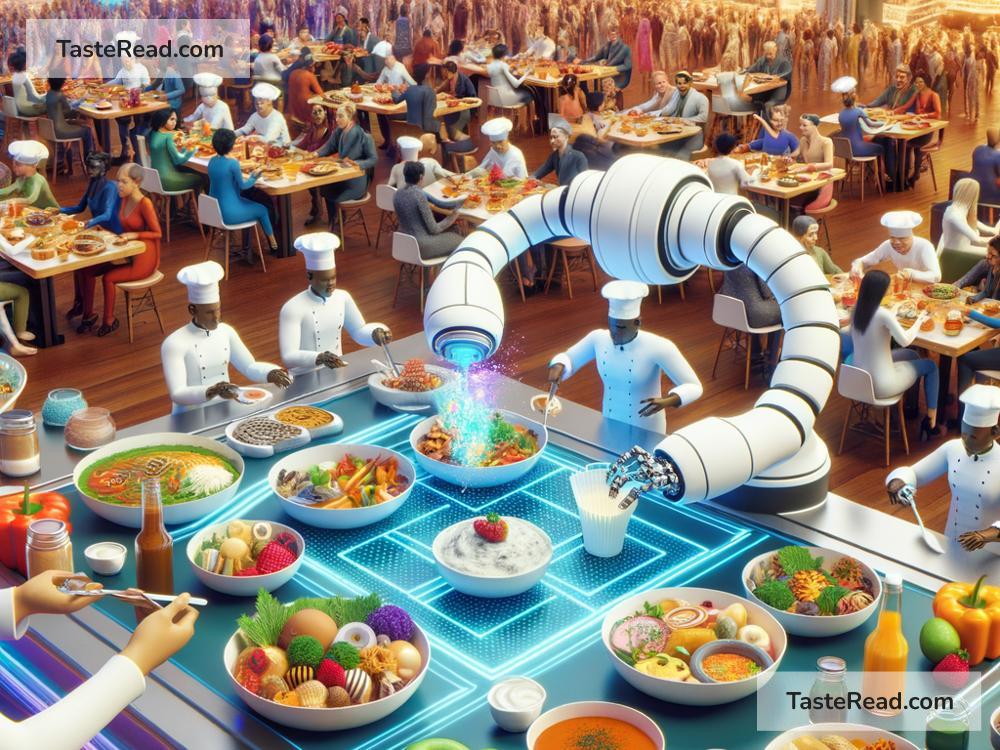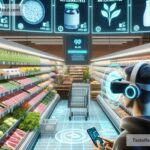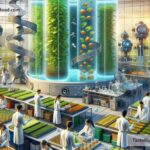The Future of Food and Cross-Cultural Exchange
Food is more than just fuel for our bodies; it’s a cultural expression, a shared tradition, and a way of connecting people across the world. As our planet becomes increasingly interconnected, the future of food is evolving in exciting ways, blending cross-cultural flavors, innovative technologies, and sustainable practices. This transformation is shaping how we grow, share, and enjoy food, and it’s opening new doors for global unity and creativity.
The Global Table: A Fusion of Flavors
Imagine sitting down at a table where ingredients from every corner of the globe come together. Already, we see traces of this in popular fusion cuisines—think sushi burritos, kimchi tacos, or matcha-flavored desserts. Cross-cultural exchange enables chefs and home cooks to bring together flavors from different traditions and create something entirely unique.
This blending of food cultures is not just about creativity, but also about learning. When one culture adopts a dish or ingredient from another, it often adapts it to match local tastes, creating new variations of the original. For example, pizza originated in Italy, but it has transformed into countless diverse styles worldwide, from New York-style thin crust to Japan’s seafood-topped version. This dynamic exchange helps us explore and appreciate the richness of global culinary traditions.
Cross-cultural food exchange also sparks curiosity and understanding. Learning about someone’s culinary heritage leads to deeper connections, breaking down barriers of misunderstanding. Sharing a meal is one of the most natural ways for people to connect, opening doors for conversations about history, lifestyle, and values.
Technology and the Future of Food
At the intersection of culture and food lies technology, which is already revolutionizing how we produce, access, and experience cuisine. One of the most promising innovations is lab-grown meat, which is created using animal cells. This could drastically reduce the environmental impact of farming, as well as provide new options for people who avoid traditional meat for ethical or health concerns.
Another exciting advancement is precision agriculture. By using sensors, drones, and AI, farmers can grow crops more efficiently, protect the environment, and ensure a stable supply of food for the growing global population. These technologies also play a role in promoting food security, ensuring that countries experiencing shortages can gain access to diverse, nutritious meals.
Food delivery platforms, artificial intelligence-driven cooking apps, and even virtual reality dining are transforming how we experience food. Imagine being able to “visit” a street market in Thailand through VR while tasting authentic pad Thai delivered to your home. These innovations make it easier for people to try foods from different cultures, even if they can’t travel across the world.
Sustainability in the Food Industry
As the demand for food increases, the question of sustainability looms large. Future generations will depend on sustainable agricultural practices to ensure that the earth’s resources aren’t depleted. This requires a balance of local traditions and global solutions.
For example, many indigenous communities have long practiced sustainable farming methods, such as crop rotation and natural pest control, handing down these skills through generations. As modern agriculture seeks eco-friendly solutions, these time-tested practices can blend with cutting-edge technologies for maximum impact.
Plant-based eating is also becoming a prominent movement around the world. Foods like lentils, chickpeas, and jackfruit—staples in many cultures—are gaining popularity elsewhere as sustainable protein alternatives. With creative recipes and mutual learning, cultures can continue to exchange ideas about how to eat sustainably while still enjoying diverse flavors.
Efforts like reducing food waste are also vital. In many cultures, using every part of an ingredient—bones for broth, vegetable peels for stock—is a practice that has been celebrated for centuries. Sharing these traditions globally can inspire people to waste less and make the most of what they have.
The Power of Food Diplomacy
Food has long been used as a tool for diplomacy, a way for nations to build bridges with one another. Events like international food festivals, cooking competitions, and cultural exchange programs foster mutual understanding and respect. Leaders sharing meals during diplomatic meetings often include dishes that represent their country’s traditions, showcasing national pride while encouraging goodwill.
As the future of food grows more globalized, the opportunities for food diplomacy will multiply. Imagine a new generation of chefs working together on international culinary projects, crafting meals that represent a mix of their countries’ flavors. Such collaborations could promote peace and teamwork while celebrating diversity.
A Shared Future at the Dinner Table
The future of food and cross-cultural exchange lies in collaboration, innovation, and respect for both tradition and progress. Food offers a universal language that transcends borders, giving us a way to learn from one another and solve global challenges together.
As technology advances and cultures continue to share their culinary wisdom, we’ll see new ways of connecting over food—from lab-grown global delicacies to sustainable farming practices rooted in tradition. But no matter how food evolves, the joy of sharing a meal will always remind us of our shared humanity.
So, the next time you try a dish from a culture different from your own, remember that it’s more than just a taste of something delicious. It’s a glimpse into the future—a future where food can unite people, solve problems, and celebrate the rich tapestry of human experience.


